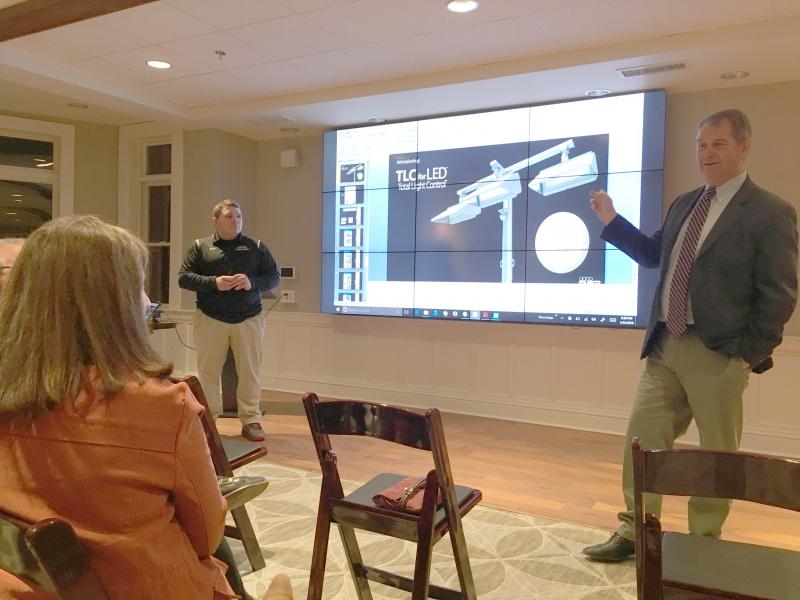Tabor officials aim to quell worries about lighting proposal
The proposed athletic field lighting project at the athletic fields at Tabor Academy won’t be like the last one – this is something Head of School John Quirk promises.
Quirk invited abutters to the school on Thursday night to talk about putting stadium lights up at the football field. After discussing the proposed project, neighbors voiced concerns about what happened when the school put in the athletic fields in the first place.
Town officials, residents and the school’s administration butted heads about the project for several years, coming to a head in 2011 when the proposed project athletic field development next to Hoyt Hall included turf fields, lighting and a backstop.
Administrators had originally wanted to build four, 90-foot stadium lights to illuminate the field, and cited the Dover Law, which expemts schools from most bylaws. Residents objected and Building Commissioner Scott Shippey denied permits for the lights, saying they violated Marion’s height bylaws.
Tabor's then-Headmaster Jay Stroud drew criticism from residents, who accused him of not working with abutters and town residents. At one meeting, Stroud said he did not intend to be a bad neighbor in Marion and that he would withdraw the dugouts and lighting plans and would take down the backstop, if necessary.
He later recanted the statement, saying he would do no such thing. Residents criticized Stroud for not matching his words to his actions.
Stroud appealed the Zoning Board's decision to deny the lighting towers, but eventually withdrew the appeal, ending Tabor's quest for field lighting at the time.
Quirk has since taken over for Stroud, and vowed to do things differently this time—starting with working alongside the neighbors.
“You should never do something just because you can,” he said. “That’s hurtful for people living in a community to feel that kind of push…I really tried hard to work with people and work with the town and be good citizens and good neighbors.”
Quirk also emphasized that the reason why the school wanted to add the lighting was to provide something meaningful for the students.
“Big athletic events are really great community events,” he said. “They’re very memorable. The fans, the kids cheering on their classmates. There’s real energy and real excitement in these things.”
“If we could work together, I’m all for it,” abutter Janet Barnes said. “Let’s make this phase good for the town, and let’s do it in a way that we can all be proud of. I can’t afford to experience what I experienced last time.”
The school has not yet approached the town about getting a special permit for the lights, as they are over the height limit allowed in the bylaws, but Quirk said he’d like to get the lights in time for football season.
“My fantasy would be to have the lights ready for the fall,” he said. “I don’t know if that’s even possible at this point, but maybe. We’re going to go at the pace that allows us to do it well.”
Mike Berry, from Musco Sports Lighting, presented the proposed plan to neighbors, which include two 80-foot poles and three 90-foot poles.
“I know for a lot of people that’s scary,” he said. “But that allows us to aim that light down, so we’re not aiming it across the field.”
The lights would be LED lights, which Berry said would reduce glare and provide better visibility for athletes.
Athletic Director Conan Leary assured neighbors that the usage of the lights would be minimal.
“If you’re thinking about the fall season alone, there’d only be a handful of games we’d even be able to do,” he said.
In the spring, Leary said that the lights might get turned on if a game was running late and it was starting to get dark, but they’d be off right after. “We have no intention to have them on 24/7,” he said.
He added that even when they were used, they’d likely be off by 8 p.m.















